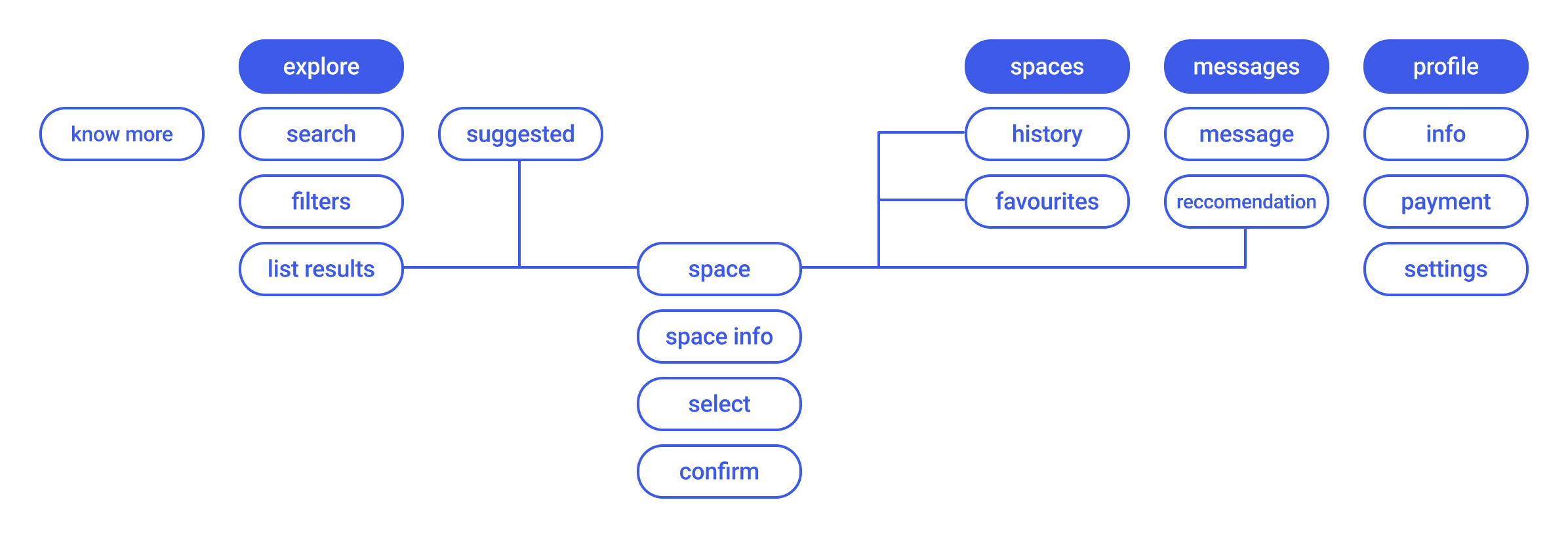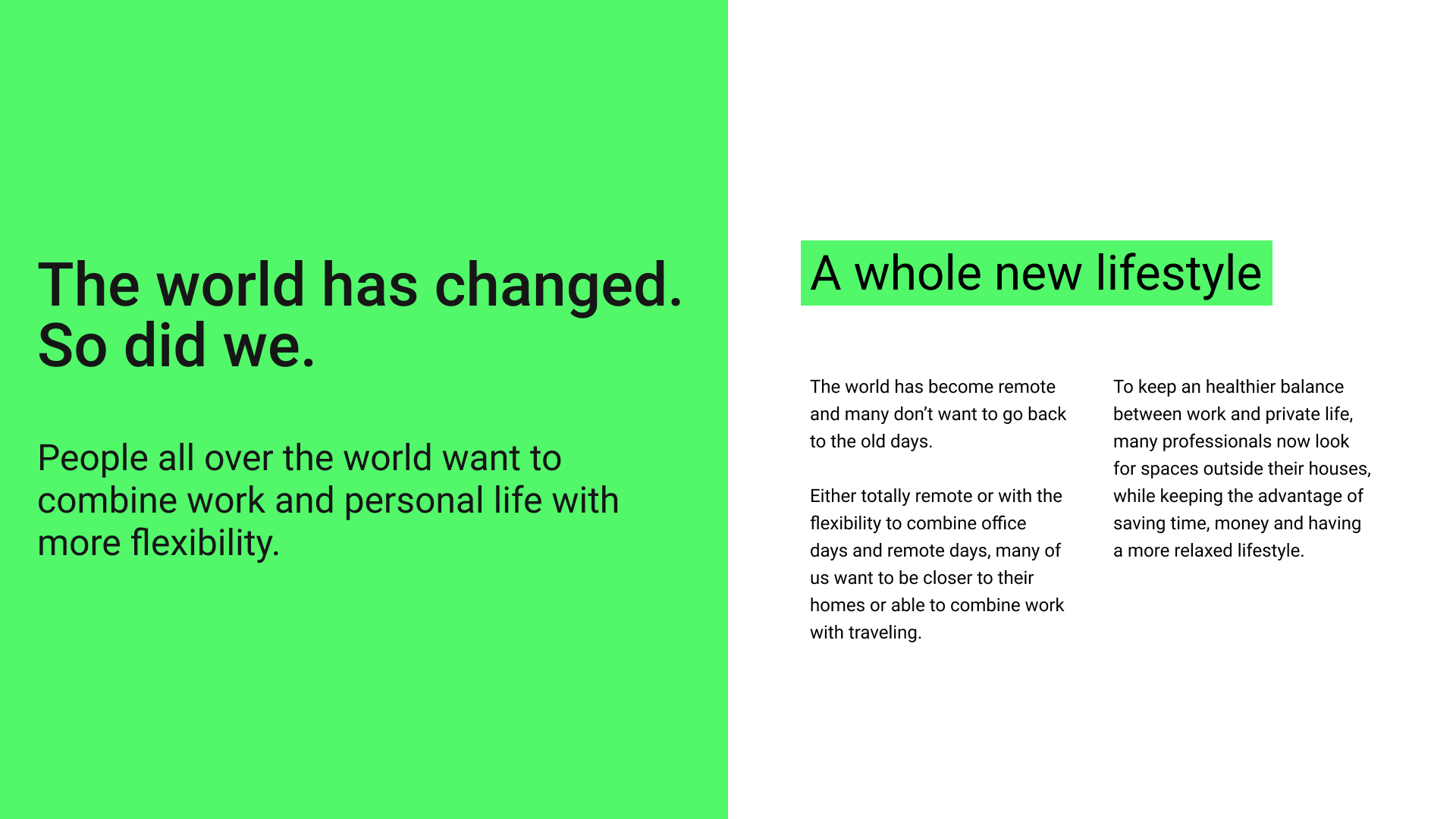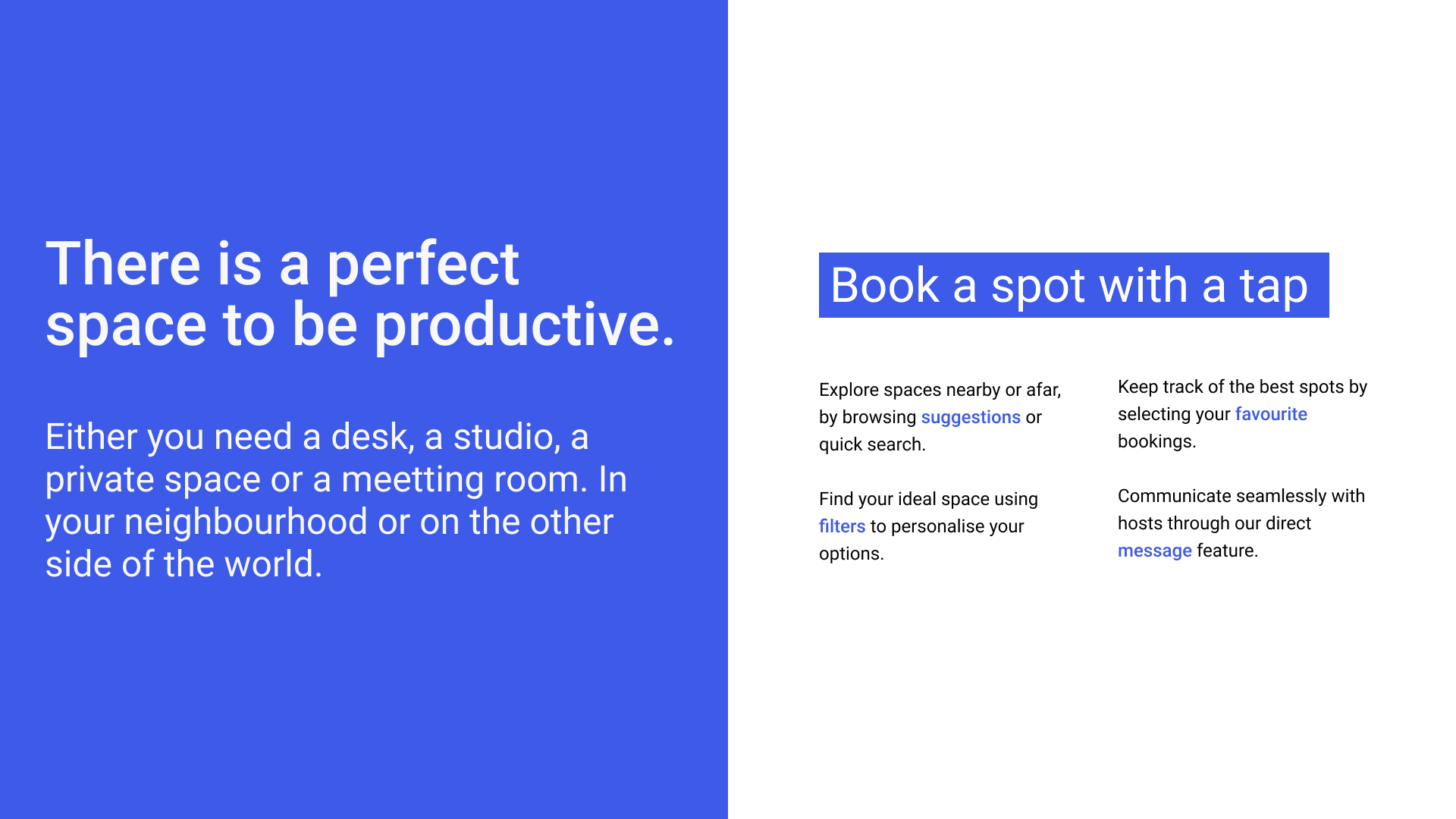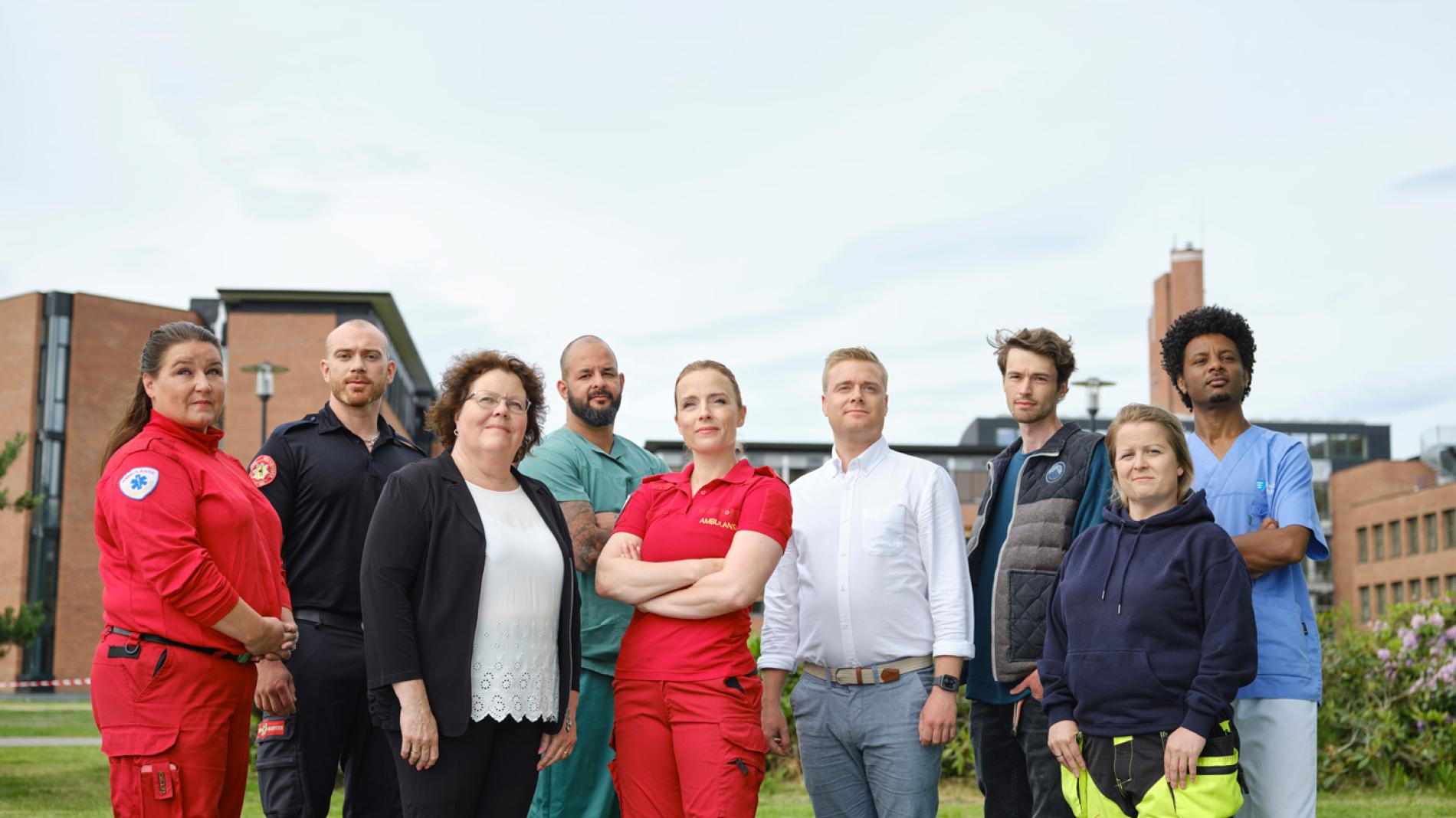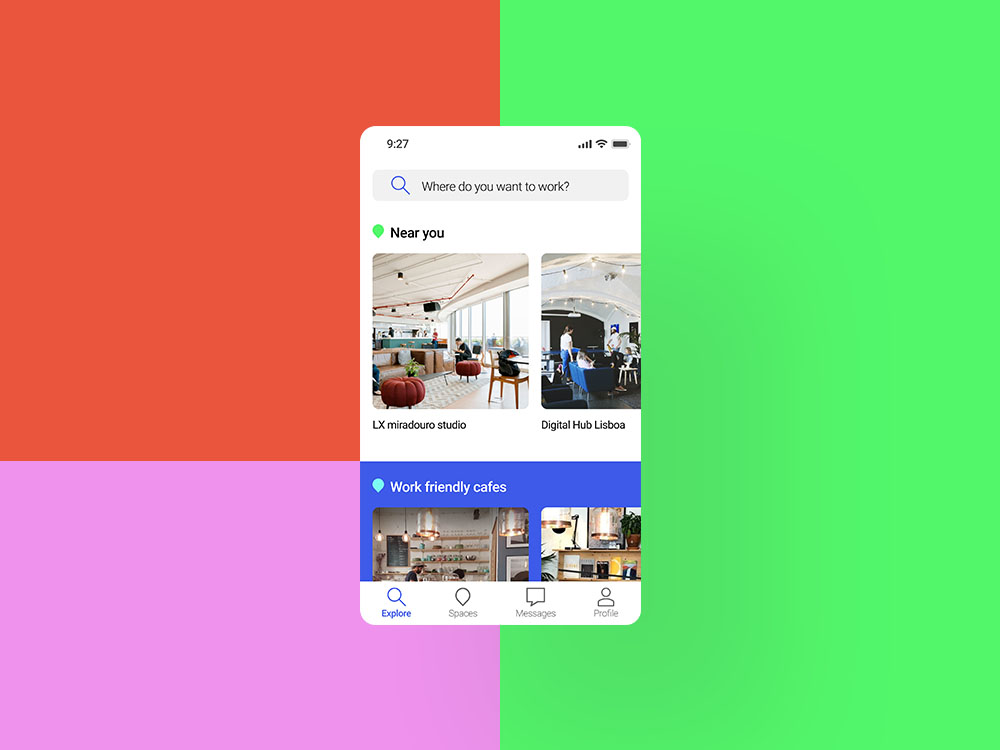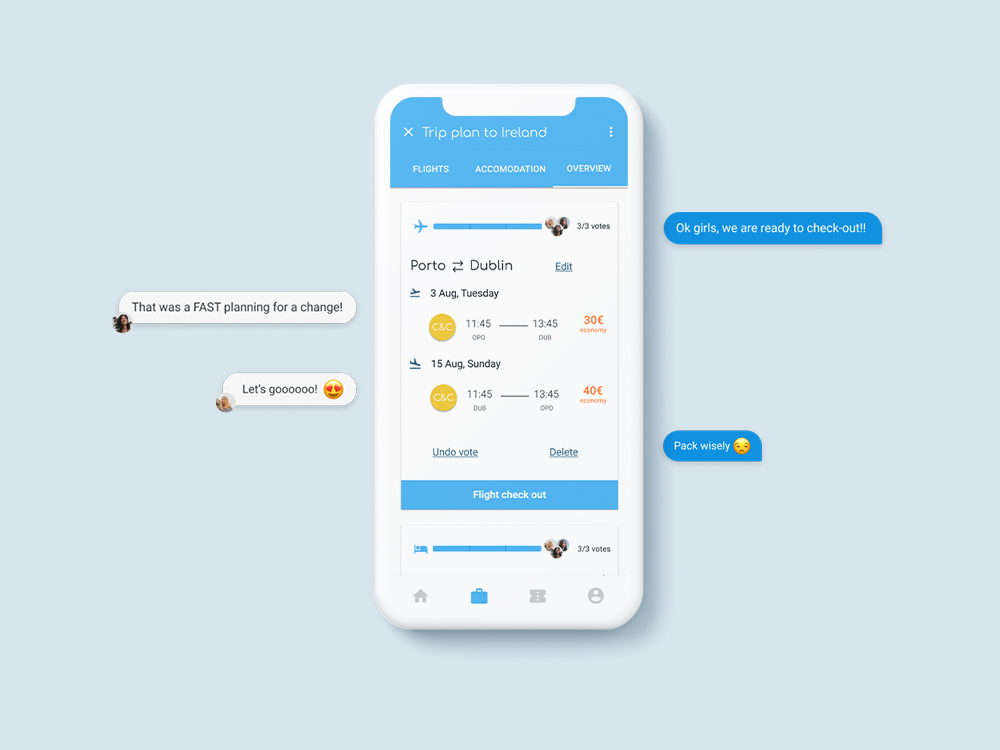Remotely
Brand identiy, Product design, Brand strategy
Rethinking work after the pandemic: upgrading remote work for a more flexible lifestyle
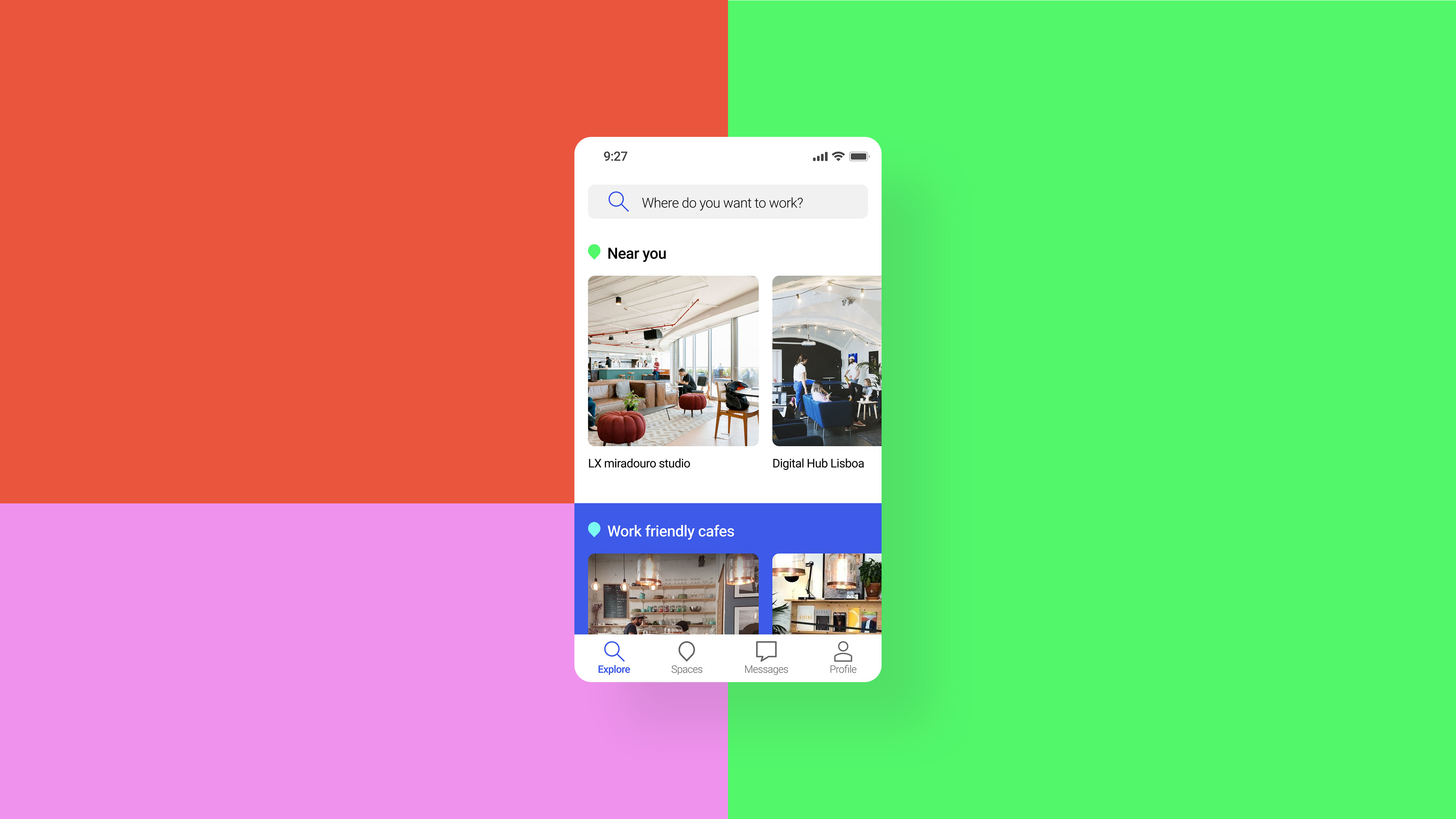
Remotely is a mobile service with a worldwide selection of work spaces for the ever increasing number of remote professionals. A digital holistic approach to work was designed to respond to the rich diversity of users, industries and individual needs.

With Covid-19 locking us down and forcing millions of people to suddenly work 100% from home, many also had a glimpse of a lifestyle they don’t want to abdicate. Either working completely remote or combining office and remote days, thousands of workers want the flexibility to work closer to home or the freedom to be wherever they want. Homes, however, have inconveniences that lead more and more people to find a solution outside.

Research goals
- Understand how different people relate to different work modes and cultures.
- Understand what leads users, or demotivates them, to look for a remote work space out of their homes.
- Find out how different professionals look for spaces for remote working.
- List what aspects and information different people value when picking a space for remote working.
- Discover how people want to change, or maintain, work habits in the post Covid-19 era.
User research
Understanding who we are designing for was essential to get close to users’ needs and motivations. Based upon our research goals, different questions were formulated for a few remote interviews and an online survey (the sample was not representative), to gather qualitative and quantitative data. Secondary research was extremely informing at this point, since the amount and quality of knowledge available about remote work practises has exploded (as much expected) during the past year of 2020.
“Some companies are already planning to shift to flexible workspaces after positive experiences with remote work during the pandemic, a move that will reduce the overall space they need and bring fewer workers into offices each day.”
McKinsey & Company
“I can’t imagine going back to a 5-days office routine. These times have proven that working remotely can be productive, sustainable and time-saving.”
“I want the flexibility to work at the office or stay close to home. Being at a specific place to get things done is definitely over for many jobs.”
“I travel a lot for work, but whenever I need to sit down it takes me a while to find the right space.”
Highights from user interviews
Research findings
When making sense of the extensive data from surveys, interviews and secondary research, some attributes stood out when users look for a remote work space:





Common user scenarios
- Need a space now!
- Researching carefully for a remote work space to go between two and three times a week.
- Daydreaming about travelling and working away for a few months.
- Book ahead a private space to conduct a group activity.
Which might fit in different lifestyles and setups:
- Full-time located (with sporadic remote days or curious to try a new setting)
- Part-time remote (working at the office some days of the week)
- Full-time remote
- Freelancers and other independent workers
- Travelling workers
- Nomadic workers
- Start-up small teams
- Non-profits
- Hobbyists
- Sporadic group meetings/dynamics
Ideation
Mapping the diversity of users and listening to their real necessities and obstacles, provided rich insights on how to design a service that responds to dynamic user needs. A first natural step was to define design principles that will guide the design practise. Later on, the design concept took form and a primary information architecture defined.
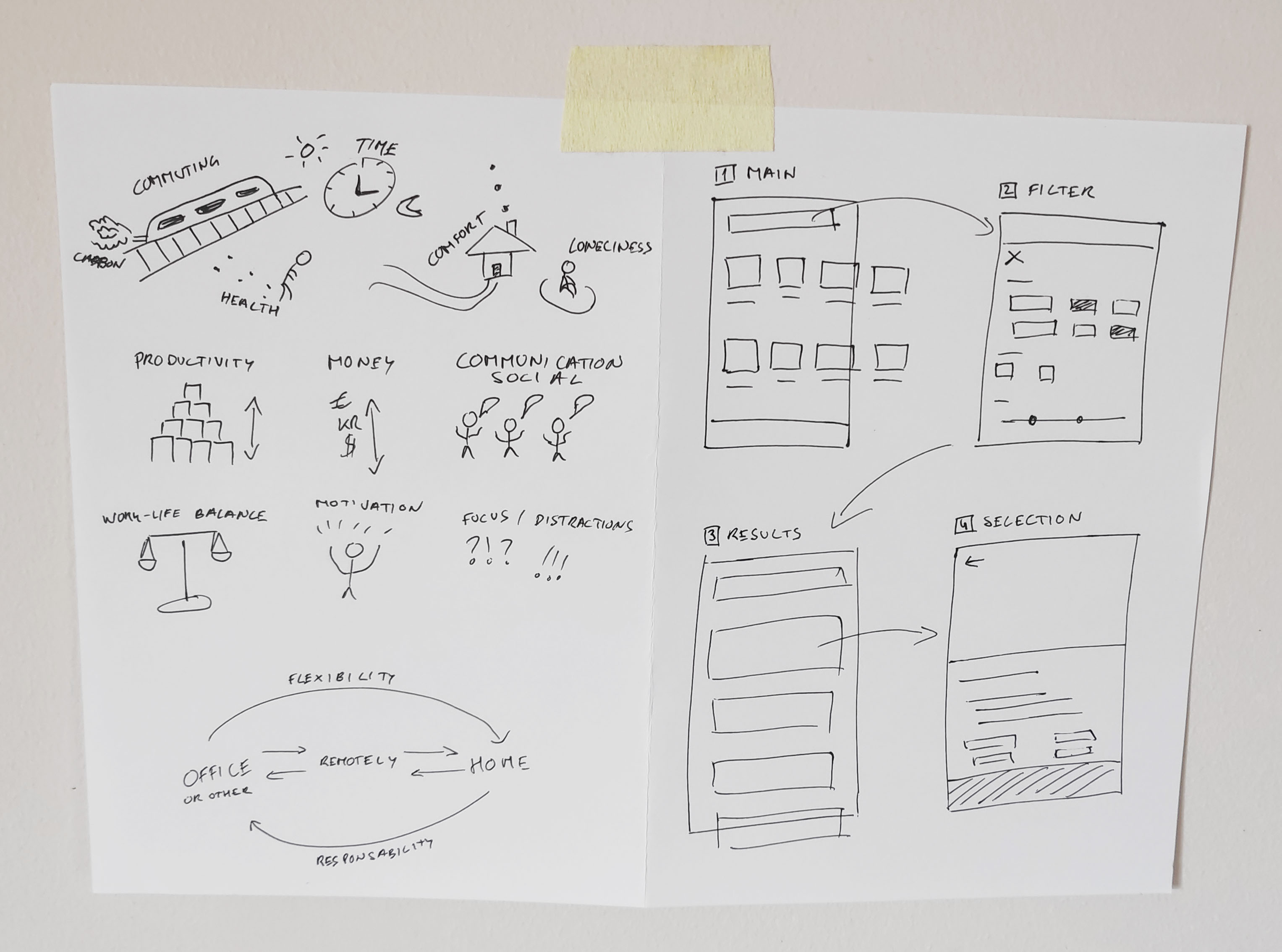
Design
Based upon the design principles defined, I finally dived into the brand identity and the visual elements. Remotely is clean, purposeful, diverse and inclusive.
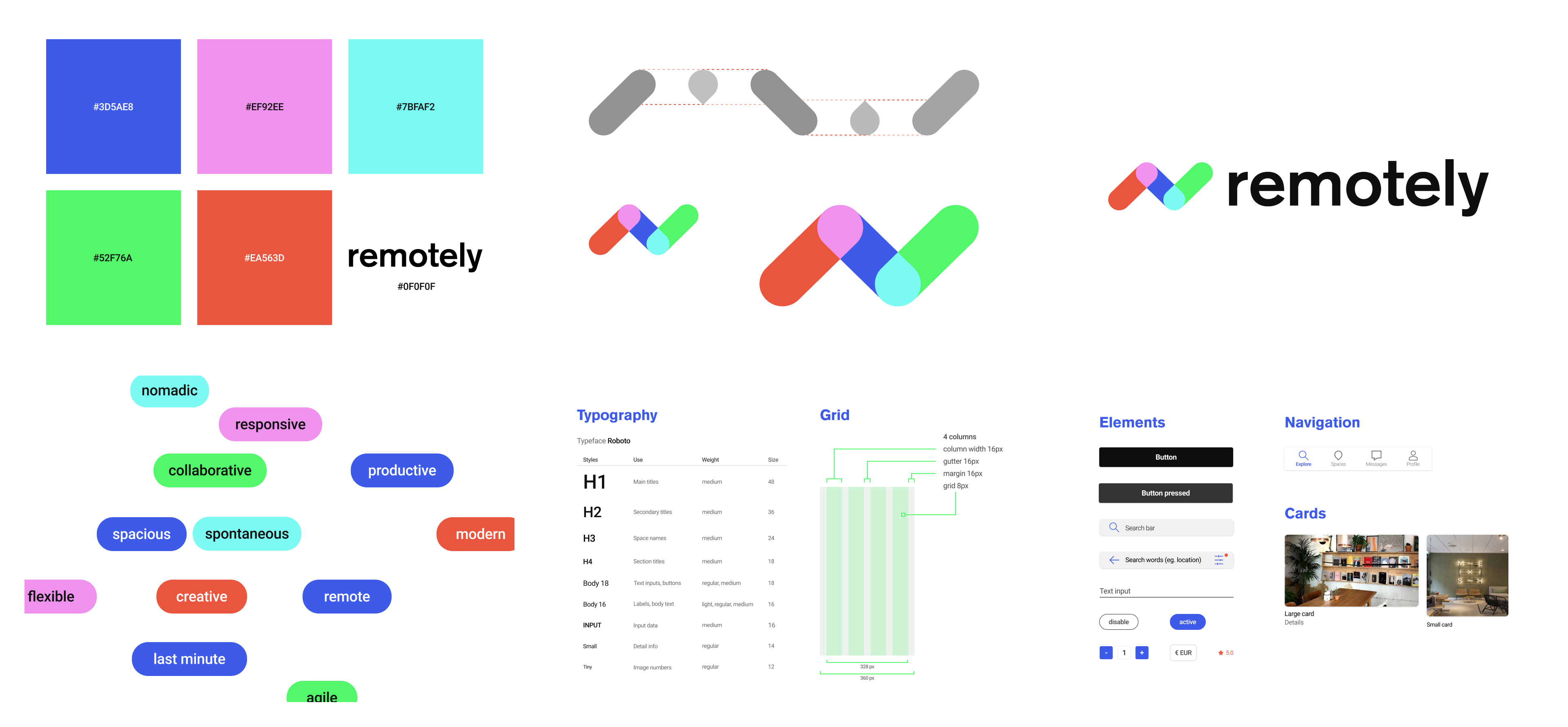
Introducing
Remotely
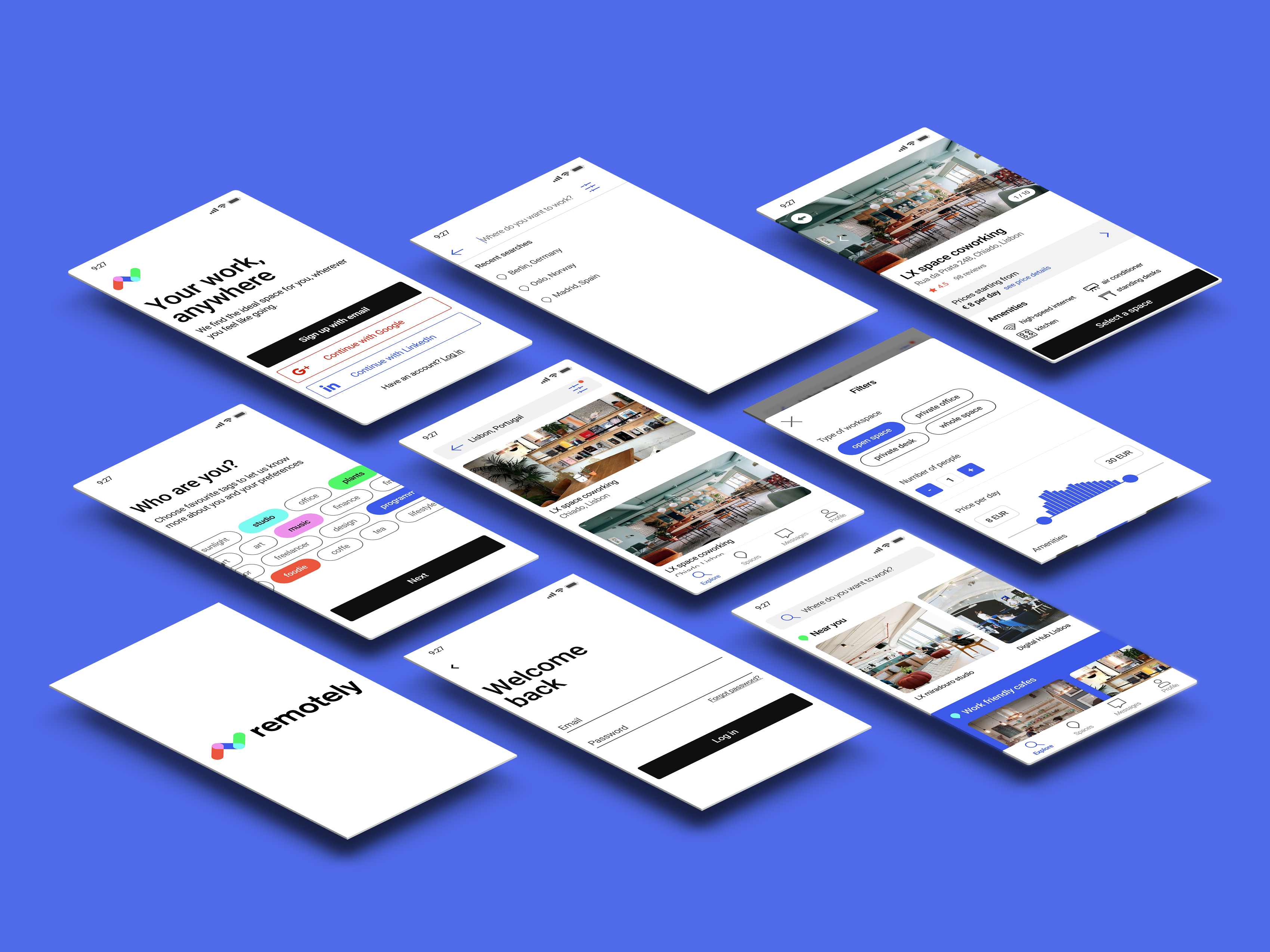

Discover a space that
fits to your needs
The service is personalised from the start, so the options displayed are tailored to users’ job profile, special requirements and personal preferences.
Explore and filter your options
Users have on-spot filters to narrow their options and see exactly their best fits. Whatever they need and wherever they want to go.
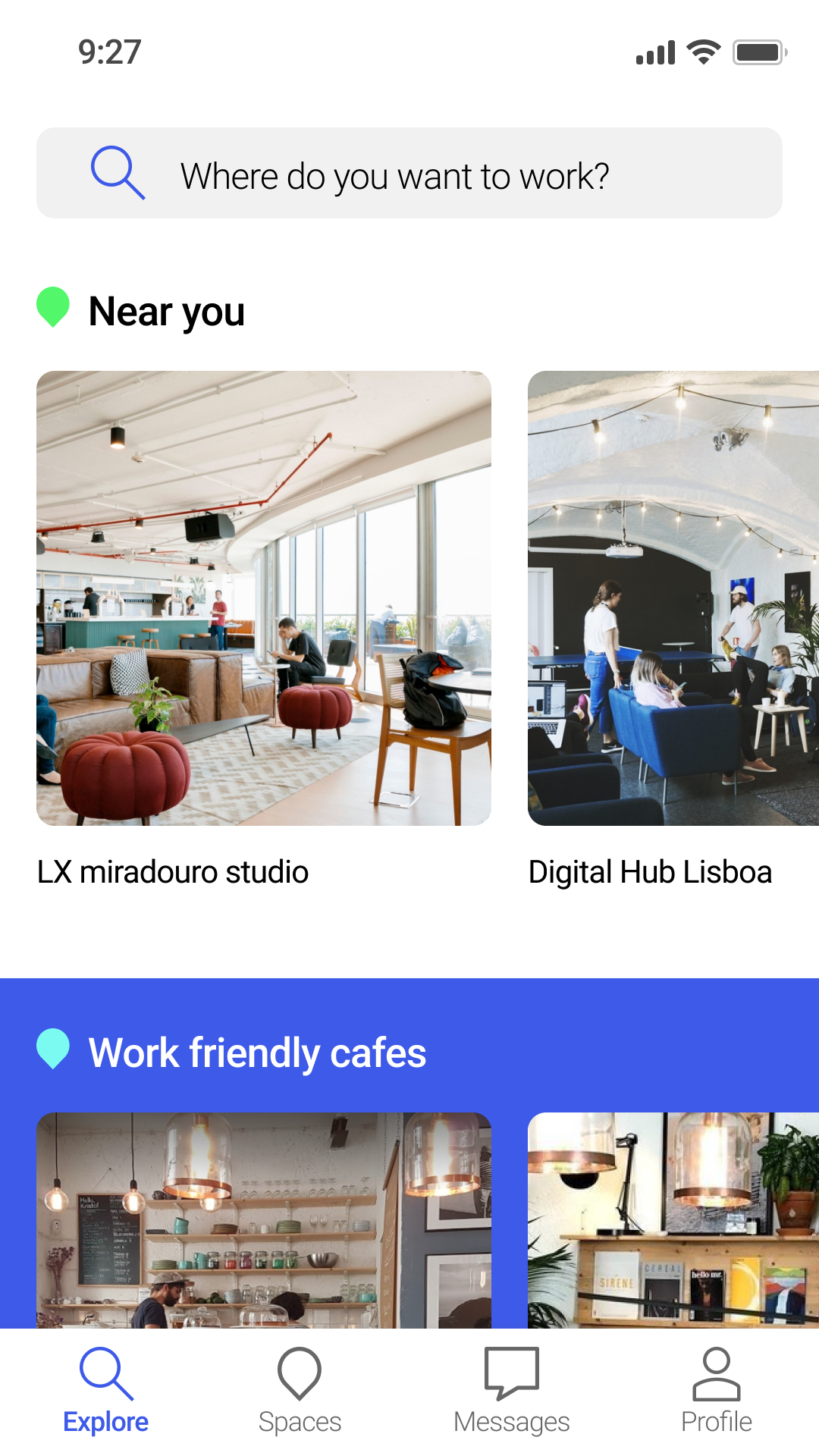
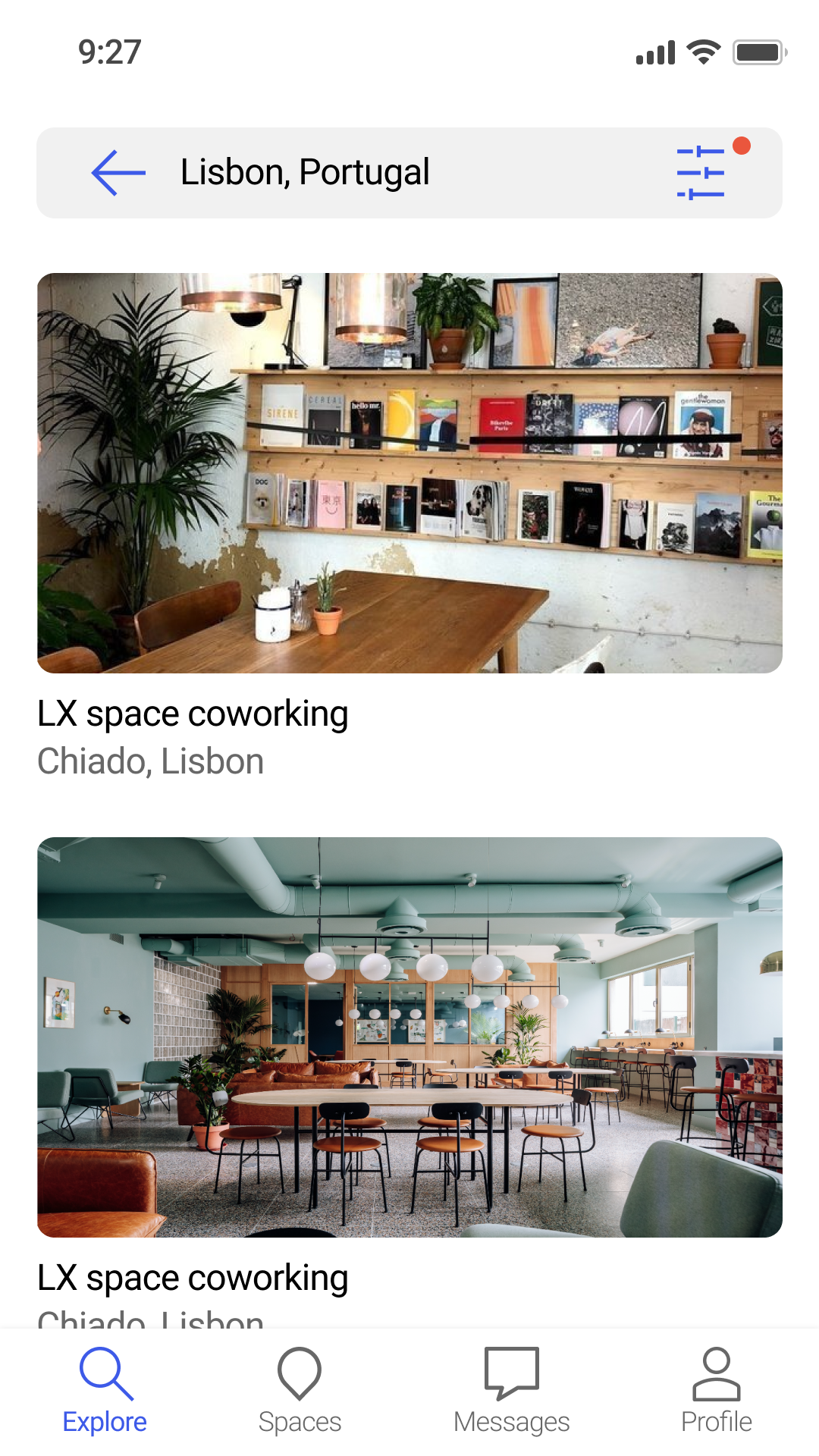
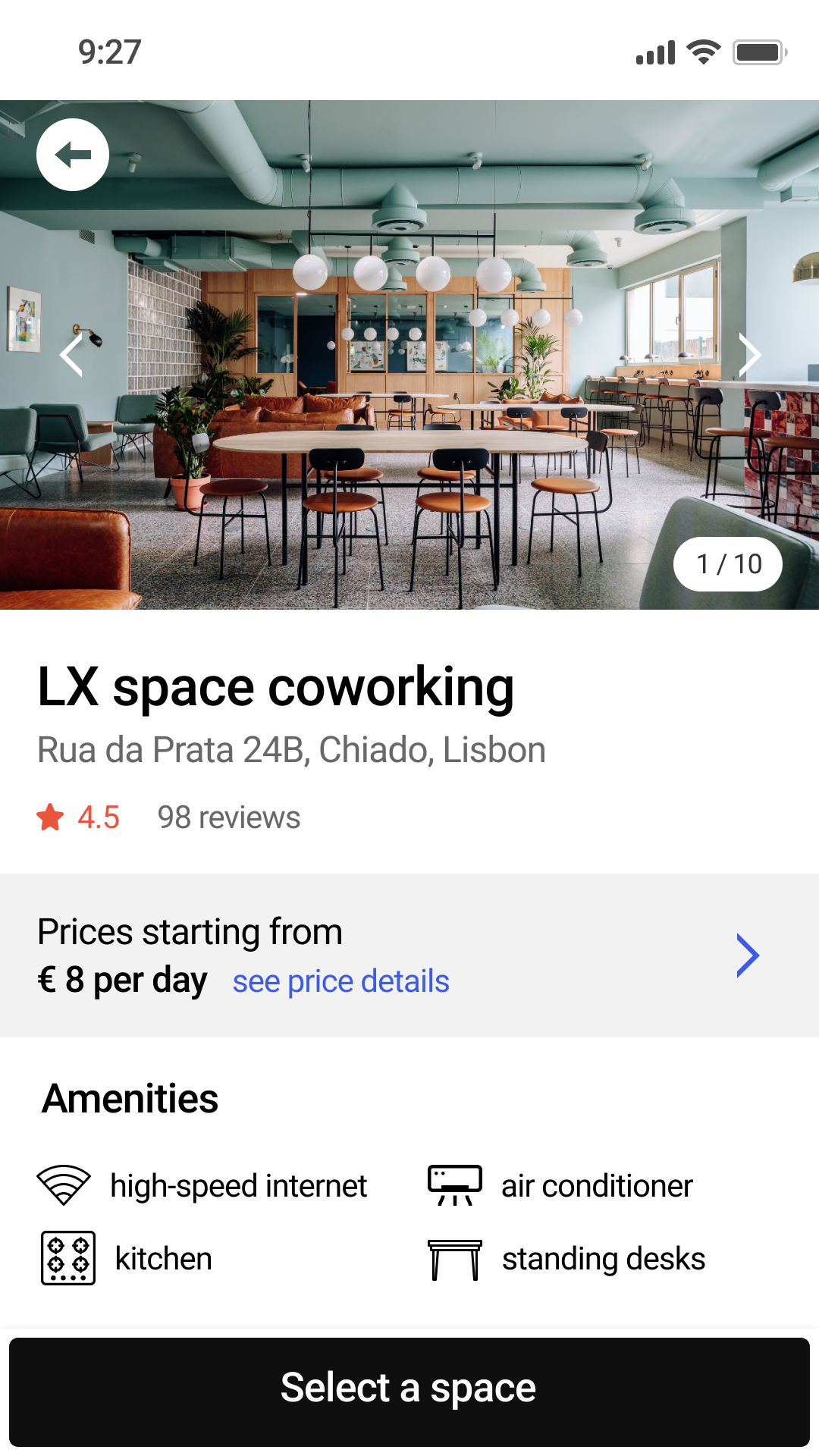
Grab a seat and get
your work done
Users can easily find all necessary information about their favourite spaces and book it by simply tapping a button.
What else... 🤔
Aspects yet to be explored:
- Increase the scale of UX research
- Dive deeper into user mindsets
- User testing high-fidelity prototypes

